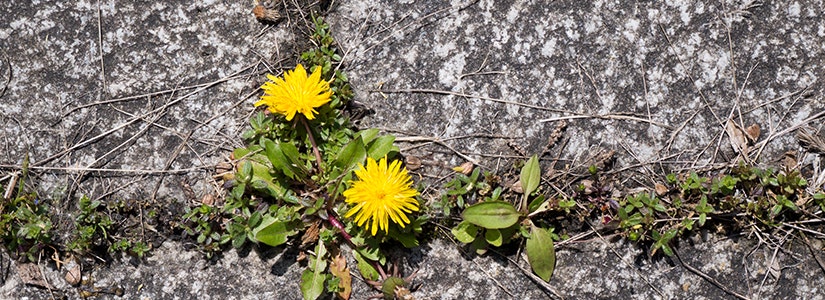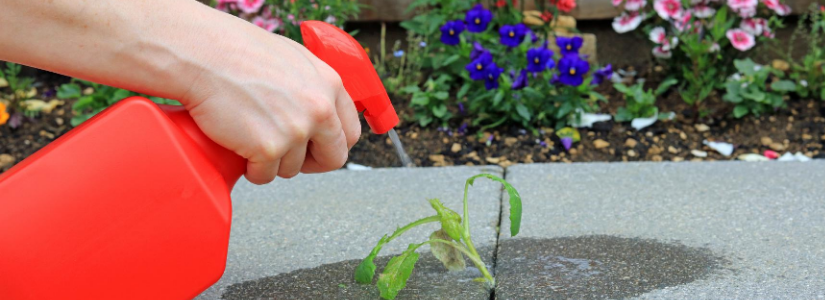

- Home
- Solution Center
- Learn
- Lawn and Landscape
- 8 Weed Zones To Watch
8 Weed Zones To Watch
Where do weeds come from?
Many weeds find their way to your yard by seed. Airborne seeds wend their way from a yard next door – or even a vacant lot at the end of the street. Weed seeds are also easily transported by animals, insects and water.
When rain rushes down the street and splashes into your lawn, it may be bringing weed seeds along with it. Lawnmowers spread seeds, and poor-quality lawn seeds, mulch, potting soil and straw can also contain weed seeds.
Where do weeds hide?
Weeds are opportunists that quickly take advantage of even the bleakest conditions to establish a presence. If you've ever seen a plant growing out of a crack in a sidewalk, you know that weeds adapt. Around your lawn, too, weeds find plenty of places suitable for healthy growth. A lawn that isn't properly cared for – that's under- or over-watered, under- or over-fertilized or mowed incorrectly – provides ample opportunities for weeds to take root.
In your own yard, establish a weed patrol by keeping an eye on the following weed "resorts," which offer ideal conditions for plants to grow and reproduce.
Paths – A path provides dry footing, but from a plant standpoint, it's also an area without competition. Paths made from loose materials, such as bark mulch or stones, can act as seeding beds, offering an ideal spot for plants to reproduce.
Beneath shrubs – Areas under shrubs can be hard to reach and may also be shady and moist, a perfect place for weeds to take root and thrive in secret.
Shady lawn – Any spot that's too shady for grass to grow is a potential haven for lawn weeds. If possible, trim trees to let more light shine on the lawn. Otherwise, shift from grass to shade-tolerant ground covers to fill in soil and keep weeds at bay.
Unpaved parking areas – Whether such an area is grassy, muddy or filled with gravel, it rolls out the welcome mat for weeds. Gravel especially offers quick drainage, which provides a perfect seedbed for plants.
Cracks and spaces – Every crack between paving stones or slabs of concrete provides ideal footing for weeds. Even cracks in concrete driveways filled with joint compound can collect enough soil to sprout weed seedlings.
Under decks – You'd think sparse sunlight would make weeds run for cover, but they seem to thrive beneath decks.
Near downspouts – Weeds frequently thrive at the base of downspouts, where moisture is plentiful. Heavy rains can wash ripe seeds from these weeds into other parts of the yard.
Tilled soil – Anytime you turn soil (or your dog digs a hole or a squirrel plants an acorn), you expose buried weed seeds to sunlight. Watch for sprouting.
Spots without plants – When existing vegetation dies, you have the potential for a hostile takeover by weeds. Keep a close watch on your yard for dead spots. Fill them in as soon as they appear, adding soil as needed and then plants, seeds or mulch.












